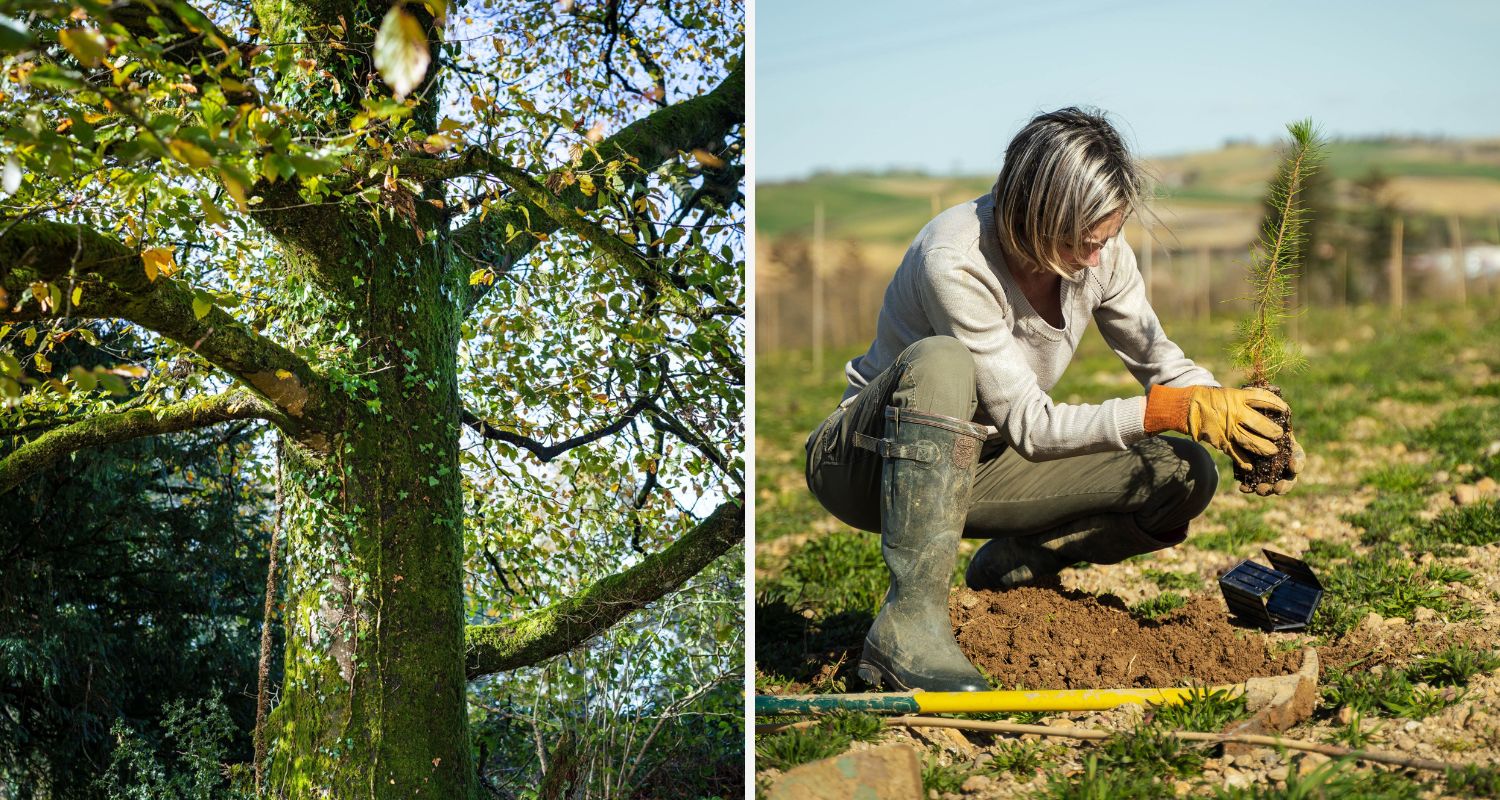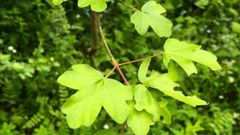2 avr. 2024
Carbon sequestration in forests: Understanding the role of forests to mitigate climate change
Explore carbon sequestration in forests worldwide. Discover forest ecosystems' role in mitigating climate change and reducing global carbon emissions.

Sustainability leaders often debate whether to focus on preserving old-growth forests or cultivating new forest area to maximise carbon absorption. But which method provides the most significant environmental benefit: reforestation or afforestation?
This is a critical question that cannot be answered with a simple either/or solution. Forest ecosystems are complex, interconnected environments where each element: old trees, young saplings, or the surrounding biodiversity plays a vital role. To maximise carbon sequestration and environmental resilience, we must take a holistic view that considers the trees' age and the broader ecological context in which they exist. Biodiversity, in particular, is the cornerstone of a forest's ability to function as an efficient and resilient carbon sink.
Why both old-growth and young trees are key for carbon sequestration in forests
At the same time, all forestry institutions agree that a tree absorbs the maximum amount of carbon when it’s in total growth and that a young tree collects only very little, as its size limits the photosynthesis process. On the other hand, when a tree ages, its growth eventually slows down. It, therefore, spends a lot of energy maintaining its structure and, in turn, has limited energy to produce new wood and capture carbon. Following this hypothesis, an old tree will store less carbon than a young tree but more than a very young tree.
To settle the debate definitively by adopting the point of view of one institution or another would be meaningless. The balance of a forest is based on the "intergenerationality" of trees. Young and old alike, trees contribute to the ecosystem.
In January 2014, a study published in the journal "Nature" hypothesised that the older trees are, the more CO2 they absorb. Based on studies conducted on all continents involving 673,046 specimens of trees of 400 different species, scientists worked to demonstrate that, for 97% of them, the mass ratio of trees continued to increase each year, even after the tree had reached a venerable age. The older the tree, the more carbon dioxide it would capture from the atmosphere to continue to grow.
Comparing Hardwoods and Softwoods' efficiency to store carbon
Carbon absorption is not the same for all species. Softwoods or coniferous trees, such as Douglas fir or Spruce, are fast-growing. They will, therefore, transform carbon dioxide as quickly as possible into the wood. On the other hand, hardwoods or deciduous trees, such as Beech or Oak, have a slower growth rate. During the first years of their lives, the latter will only absorb a small amount of CO2. But they live longer and are denser (580 kg/m3, compared to 450 kg/m3 for softwoods on average). Here, comparison turns to reason.
When considering the storage time of carbon in forest products, it’s important to recognise the significant differences between short- and long-lived items. We know that carbon storage varies significantly by product lifespan. For instance:
- Construction timber (used in buildings) can store carbon for 50-100 years.
- Furniture like tables or cabinets might only store it for 20-30 years.
- Cardboard or packaging materials usually last only weeks to months before being recycled or discarded.
While the type of tree, whether hardwood or softwood, influences how quickly carbon is absorbed, the most effective way to extend the carbon cycle is through recycling short-lived products, like paper or packaging. By repurposing these materials, we reduce waste and ensure that carbon remains locked in for extended periods, reducing the need for new raw materials.

The importance of planting new trees and maintaining existing forests for carbon storage
There is no one-size-fits-all answer to the question of whether to plant new trees or maintain established forests; it depends on the situation. Planting young trees on bare land or in degraded forests is crucial to restoring life. However, maintaining current forests is equally important. Foresters manage this through careful planning, including selective cutting, new planting, and natural regeneration. A well-maintained forest absorbs more carbon than one left unmanaged, with each tree playing a vital role in a carefully balanced ecosystem.
In short, mixed-aged forests can play a key role in climate change mitigation!
A thriving forest ecosystem balances species diversity and tree ages as nature does. This blend creates a more resilient and productive carbon sink.
A forest is only an effective carbon sink if it offers a subtle balance of biodiversity in which young and old trees can coexist in a real mix of species. The forest is a living environment whose integrity, stability and prosperity depend highly on species diversity. In this complex environment, such a balance is provided by animals, plants, and bacteria. From these intrinsic virtues comes a clear conviction: the more complex the forest is, the more resistant it is to bad weather, pests, and parasites. And in the long term, this is how it will be more productive.
EcoTree offers nature-based solutions to combat climate change
For businesses committed to sustainability, every investment should drive real ecological improvement. The concept of additionality ensures that contributions target areas where they truly make a difference, like reforesting degraded land or maintaining forests at risk of decline. Avoiding compensatory actions in ecosystems that are already thriving is key.
EcoTree’s mission is to create or rehabilitate forests so they function as effective carbon sinks. Without active management and funding, these forests wouldn’t reach their full carbon-absorbing potential. Our "close-to-nature" forestry approach focuses on long-term biodiversity and productivity, ensuring maximum carbon sequestration.
Businesses investing with EcoTree support more than tree planting; they invest in forest management, biodiversity conservation, and restoration. This balanced approach ensures that old-growth trees support younger ones, enabling forests to absorb CO2 effectively over time.
As GREF engineer Claude Roy explains: "A dense and ideal forest is a healthy, productive entity, generating income that guarantees its protection." This balance allows forests to remain sustainable carbon sinks, providing ecological and economic value.
For sustainability teams, partnering with EcoTree helps meet carbon reduction goals while supporting biodiversity. By focusing on projects that meet additionality criteria, companies ensure their investments make a lasting environmental impact aligned with broader sustainability strategies.
Five quick facts about the world's forests:
- Forests capture roughly 30% of global CO₂ emissions yearly and are the world's second-largest carbon sink. Only oceans absorb more.
- Old-growth and young forests both play crucial roles in carbon storage: older trees store large amounts of carbon, while young, fast-growing trees absorb CO₂ quickly as they grow.
- Forests cover about 31% of the Earth's land area and provide a habitat for 80% of the world's terrestrial biodiversity, supporting countless species.
- Planting new trees and maintaining existing forests are equally important: new trees help restore degraded land, while established forests maximise carbon storage and sustain biodiversity.
- Sustainable forest management can significantly increase a forest’s carbon-capturing potential, helping mitigate climate change while promoting biodiversity and resilience.




